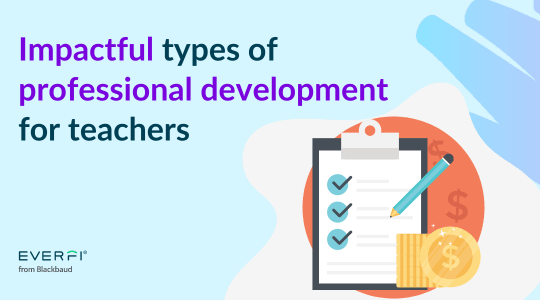Today, many businesses aim to live up to the three ideals of diversity, equality, and inclusion (DEI) to better serve the needs of individuals from all walks of life. Every industry needs DEI, and the manufacturing sector is no different. A diverse workforce solves problems more creatively and effectively; DEI also improves hiring, retention rates, employee engagement, and financial performance.
Recent data from the Manufacturers Alliance for Productivity and Innovation paints a troubling picture regarding workplace DEI. The number of women employed in the business has decreased over the past twenty years, despite attempts to increase diversity. This highlights the urgent need for manufacturing to give DEI more attention.
In this changing environment, manufacturers who use DEI are better positioned to innovate, adapt, and prosper. In this blog, we will explore the challenges of achieving DEI in manufacturing and offer practical strategies for creating a more inclusive environment.
Also Read – Strategies to Promote Workplace LGBTQ+ Diversity and Inclusivity
Challenges of Achieving DEI in Manufacturing
Achieving DEI in the manufacturing industry presents several challenges, including:
-
Historical Lack of Diversity
The manufacturing industry has historically been dominated by men, with minimal representation from women, minorities, and other marginalized groups. Despite constituting over half of the American workforce, women make up less than one-third of manufacturing professionals today. Stereotypes and societal norms play a significant role in excluding women from the manufacturing sector.
Underrepresented groups are often dissuaded from pursuing careers in manufacturing due to perceptions of the industry as physically demanding and potentially risky, further reinforcing its male-centric image. This perpetuates the stereotype that manufacturing is better suited for men.
Also Read – Most Successful and Innovative Women Business Leaders in 2024
In the workplace, unintentional bias fosters homogeneity by giving preference to candidates who share recruiters’ values or resemble them. This leads to a terrible loop in which marginalized groups—like women, people of color, and people with disabilities—get negligible employer attention.
Unconscious biases are influenced by stereotypes and ideas about gender, race, ethnicity, and other characteristics. These prejudices have the potential to limit career options and progression for underrepresented groups.
-
Unwelcoming Workplace Culture
The manufacturing sector’s discriminatory work climate might make it difficult for people of different races and genders to succeed. For underrepresented groups, a lack of DEI in manufacturing initiatives can devalue emotions. Talent from a diverse pool may leave an organization if the culture accepts and encourages harassment, discrimination, or microaggressions.
Additionally, underrepresented groups in manufacturing can struggle to conceive successful careers and find mentors and advisors due to a lack of easy access to professional networks and role models. Thus, an inclusive, courteous, and belonging culture is necessary to retain talent.
-
Attracting a Diverse Talent Pool
Many marginalized groups may have false beliefs about jobs in manufacturing, believing them to be potentially risky, exhausting, or non-competitive. Furthermore, these groups likely don’t receive enough information on the industry’s variety of positions, career paths, and opportunities for growth. This lack of complete knowledge may impact their decision to join manufacturing jobs.
Also Read – 5 top companies embracing diversity and inclusion | Engagedly
Strategies for Creating a More Inclusive Manufacturing Workplace
Leadership Commitment:
Your leadership team serves as the cornerstone in establishing and nurturing an inclusive workplace environment. Leaders wield significant influence over organizational culture, and when they actively advocate for diversity, equity, and inclusion (DEI) in manufacturing, it permeates decision-making at all levels. By fostering a culture where DEI is fundamental, leadership sets the stage for a sincere and welcoming atmosphere for all employees. Therefore, securing leadership buy-in is not just advantageous but imperative for the success of DEI initiatives.
Diverse Recruitment Practices:
To cultivate a more diverse workforce from the outset, organizations must scrutinize and revise job descriptions to eliminate any language that could deter qualified applicants from diverse backgrounds. Expanding the talent pool involves collaborating with staffing agencies, forging partnerships with educational institutions, and engaging with like-minded companies that prioritize diversity in their recruitment efforts.
Inclusive Onboarding and Training:
Creating inclusive onboarding and training programs is essential to bolster employee engagement, retention, performance, and the organization’s reputation. A standardized onboarding process should be implemented for every new hire, irrespective of their background. Furthermore, regular DEI training and clear policies help ensure that employees from diverse backgrounds feel valued and embraced from day one.
Mentorship and Sponsorship Programs:
Underrepresented employees stand to gain invaluable soft skills such as negotiation, leadership, and effective communication through mentorship and sponsorship programs. These initiatives not only facilitate professional growth but also help individuals overcome barriers to advancement. Implementing such programs underscores an organization’s steadfast commitment to fostering diversity and inclusion throughout its ranks.
Also Read – 7 Diversity, Equity, and Inclusion Best Practices
-
Employee Resource Groups (ERGs)
ERGs provide a safe space for underrepresented employees to freely demonstrate who they are, what they’ve been through, and what challenges they face at work. They reflect the concerns and interests of underrepresented personnel, advocate for more inclusive policies and practices, and encourage employees from all backgrounds to voice their opinions. ERGs also provide a sense of community, empowerment, and support among staff members. By encouraging a workplace culture supporting DEI in manufacturing, ERGs enhance employee engagement, retention, and overall organizational success.
Data may be used to accurately measure an organization’s current DEI level. Identifying and addressing gaps in the expected and current levels can help companies address prejudice, exclusion, and discriminatory acts, promoting a more inclusive work environment. It also offers information on initiative results and helps distinguish between successful areas and those that still need work. Data analysis provides a structure that companies may use to establish their objectives, assess their progress, and ultimately create better DEI work environments.
Benefits of a Diverse and Inclusive Manufacturing Workforce
-
Innovation and Problem-Solving
A diverse and inclusive workforce brings together individuals with varying backgrounds, perspectives, and abilities. This diversity of views leads to increased creativity and innovation within manufacturing groups. When employees from different backgrounds collaborate, they provide fresh perspectives and ideas that foster the development of innovative solutions and improved decision-making.
-
Employee Engagement and Retention
Workers who have a sense of belonging in their organizations are more likely to be enthusiastic about their jobs and the organization as a whole. They have a stronger sense of dedication and ownership, which boosts output and performance. Employees are inspired to go above and beyond in their positions when they feel that their efforts are valued and acknowledged.
Moreover, people are less stressed and anxious when they feel satisfied with their work. This results in better mental health, a rise in job satisfaction and retention, and improved morale.
-
Enhanced Reputation and Employer Branding
Customers, investors, and the community tend to have positive opinions of businesses that emphasize DEI initiatives. A firm dedication to DEI strategies in manufacturing may help a company stand out from the competition and improve its reputation by showing that it values equality and social responsibility. Companies may also access a wider talent pool by actively promoting diversity and inclusion. This broadens the company’s pool of potential hires and raises the possibility of identifying the most suitable candidates for available roles.
Also Read – Diversity and Inclusion In The Workplace: Benefits
Summing Up
Embracing Diversity, Equity, and Inclusion (DEI) in manufacturing heralds a promise of innovation, expansion, and harmony. According to a Workday poll, 78% of executives in global companies acknowledge the growing significance of DEI in 2023. By cultivating a DEI-centric work culture that fosters creativity, boosts employee engagement and retention, fortifies decision-making processes, and underscores a commitment to social responsibility, firms can attract top talent and enhance their reputation. Moreover, DEI fosters financial competitiveness and directly enhances business performance and innovation. Thus, companies that prioritize creating a diverse and equitable work environment are strategically positioned to excel in today’s dynamically evolving manufacturing landscape.
Frequently Asked Questions
-
Why is it essential to create effective affinity groups?
Affinity groups offer a secure and encouraging environment for people with similar personalities or backgrounds. These groups may provide emotional support, encouragement, and motivation, especially in situations of marginalization or prejudice. Thus, developing strong affinity groups is critical to achieving social justice, ensuring belonging, and promoting fairness.
-
How can the manufacturing industry overcome resistance to DEI initiatives?
Initiatives promoting DEI may encounter resistance from various sources, including cultural prejudices, resistance to change, ignorance, and so on. Therefore, organizations should offer thorough education and training programs to staff members at all levels to clarify myths, resolve misconceptions, and increase knowledge of DEI’s significance.
-
How can the success of DEI projects in manufacturing be measured?
The success of DEI strategies in manufacturing may be assessed using metrics, including employee satisfaction surveys, the presence of diverse leadership teams, the inclusion of people from diverse backgrounds in hiring and promotion, and retention rates of people from underrepresented groups.













